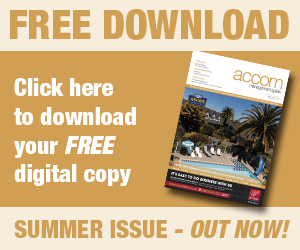The New Good, Bad and Ugly Hotel Customer
- Details
- Published Date
In the past, a good customer was someone who didn't bargain too much, was loyal (almost always) and spent constantly and consistently.
They were predictable, reliable and fair. However, with the rise of social media (and the new forms of accountability and reputation management that inevitably come with it), hoteliers are being forced to re-evaluate how they interact with their customers, while revenue managers are looking at ways to incorporate this into their revenue management strategies.
The uses for social media are varied for hoteliers. Typically it is used to develop communities of customers, collect feedback and monitor the overall sentiment of the hotel, all of which are important. Ensuring that your customers feel like they have a special relationship with the hotel means that they will keep coming back and social media allows hoteliers to not only engage with customers on a one-to-one basis but also track behaviour and loyalty to a greater extent than ever before.
In most cases, the core values of loyalty remain the same in spite of the new social media that have emerged: hoteliers still need to identify their best customers, track their total/spend value and their interactions, provide special deals and special pricing as appropriate.
It is important for hoteliers to see social media as a data source that can inform both tactical and strategic revenue management practices. Utilising the information freely available online to identify market segments, track needs and preferences and determine buzz about pricing policies can essentially act as a "world-wide focus group" and help build loyalty and determine what the conversation between hotelier and guest should be about.
There are three main ways to evaluate social media and apply it to the revenue management strategy of a hotel. The first of which assesses the basic performance information by channel using descriptive statistics. These answer questions like "How many friends and followers do I have?" or "Which sites are most productive?" and are useful in the tactical, day-to-day management of social media programs.
In order to develop strategy, however, a deeper look is required and a social network analysis should be performed to identify influencers within your social networks. This should go beyond looking at who are the prolific writers or tweeters, or the ones with the most friends and followers, but focus on those who are listened to the most.
This analysis of individuals' influence in their respective communities should be complemented by a significant social media analysis, using text analytics to turn volumes of unstructured text data into meaningful, actionable insight. This text mining and, like data mining, uncovers linked topics as well as provide insight into what is important to the customer base. Sentiment analysis uses natural language processing to understand how customers feel about your brand, your products and your services. Sentiment should be tracked over time, so you can identify trends, or analyse the effectiveness of a marketing effort.
By being proactive and building social media into customer retention and revenue management strategies, it is possible to ensure that key influential customers leave with a positive experience and hotels continue to meet the needs of key markets, which in turn drives up demand.
Klaus Kohlmayr
IDeaS Advantage
Founded in 1989, IDeaS Revenue Solutions - a SAS Company, offers industry-leading revenue management software, services and consulting to the hospitality industry. Headquartered in Minneapolis, IDeaS has technology, support, sales and distribution offices in North and South America, the United Kingdom, Europe, the Middle East, Australasia and Asia.


